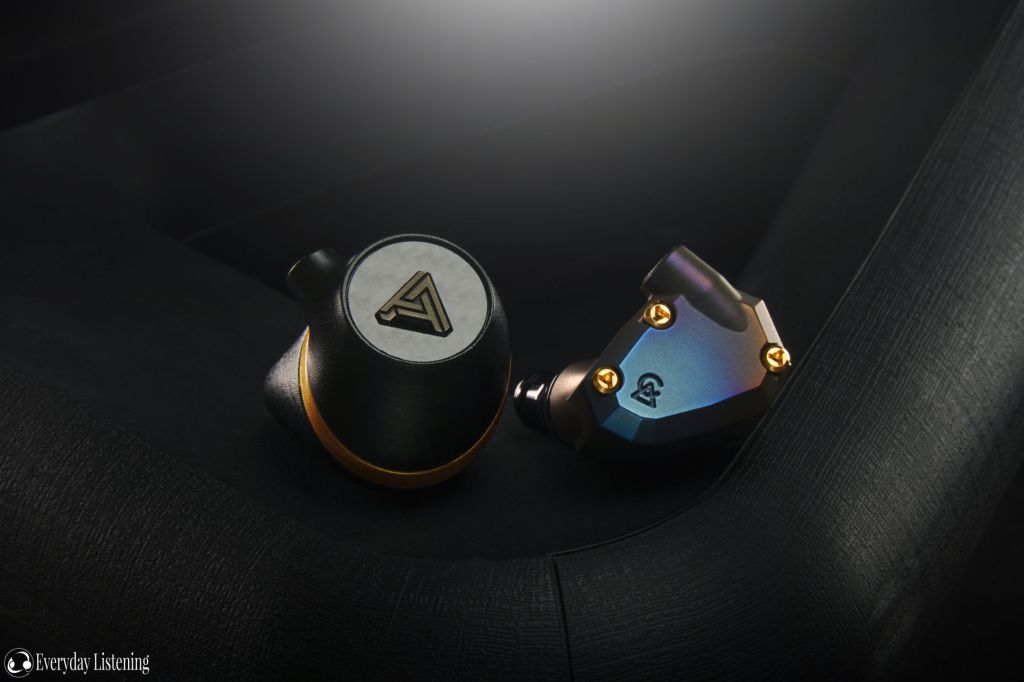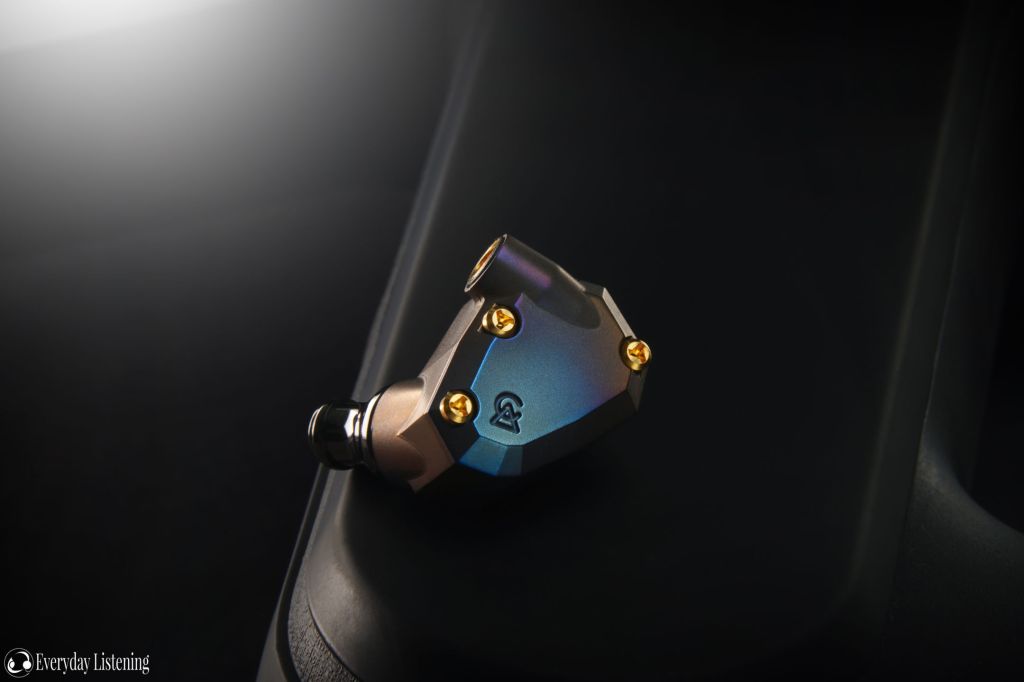Campfire Audio Moon Rover Review – Interstellar

Comparisons –

Shoer S12 ($109): At just a tenth of the price, the S12 implements a metal shell and planar driver. Of course, the quality can’t hold a candle to the titanium Moon Rover nor does the overall fit and polish quite compete. With that said, it offers a taste of the same tech at a fraction of the price. The S12 is surprisingly comparable to the Moon Rover from a pure tuning point of view as well. It has a similar tuning with more contrast between the core frequency bands. This makes it sound more vivid and less coherent which gives it a fun character at the expense of overall fine detail retrieval and balance.
The S12 has more bass overall and it has more of a deep-bass focus. This gives it a bit more weight and it has better dynamics than the Moon Rover. Conversely, the Rover is more balanced in its voicing and separated with greater detail retrieval, it’s a bit more responsive. While both earphones peak at 2.5kHz, the S12 has a much bigger lower-mid dip. This gives it a more vivid, leaner voicing. The Moon Rover is more linear and even-handed. It has a better balance between instruments and vocals and between male and female vocals. The S12 tends to push male vocals back a bit more and it lacks the same coherence. The Moon Rover has notably higher resolution in the midrange, with better layering, definition, and fine detail retrieval.
While both have an energetic top-end, the Moon Rover has better extension giving it immediately more dimension and overall nuance. The S12 has a crisp, clear, and detailed foreground with dual low and mid-treble emphasis. Despite this, the Moon Rover has a much more defined leading edge giving it more clear-cut notes and better detail retrieval. The S12 has more air but the Moon Rover has more space and sparkle, it retrieves far more fine details but does sound thinner in so doing. The Moon Rover has a much larger and more layered stage, sounding far more complex.
Campfire Audio Fathom ($1059): Campfire’s own all-BA monitor comes in at a very similar asking price and implements the more refined Emerald Sea-based shell. It has a similar overall tuning with a slightly warmer bass, coherent midrange and a crisp treble with loads of sparkle. The Fathom has a small mid-bass bump over the Fathom which makes it more fun and punchy. Meanwhile, the Moon Rover sports slightly more depth and power in the sub-bass giving it more weight. The Fathom is faster and more defined while the Moon Rover has a slightly keener attack, giving it better impact properties and dynamics.
The midrange is slightly more forward and coloured on the Fathom and more even-handed on the Moon Rover. However, overall, the two are more alike than dissimilar. The Fathom is warmer due to its bass tuning but also has a bit more clarity in the upper-midrange which brings female vocals slightly more to the fore and provides a slightly more vivid voicing. The Moon Rover is more linear and slightly more defined with less bloom and a cleaner tone overall. It is a touch more articulate but both trade blows in terms of detail retrieval. The Fathom has a similar treble tuning but has less upper-treble zing. Despite this, and perhaps due to the driver type, the Fathom ends up sounding a notch brighter than the Moon Rover
In return, the Fathom has higher note definition and fine details are more clearly expressed as a result. Though it measures brighter, the Moon Rover actually sounds slightly smoother and more organic than the Fathom, trading some micro detail for a slightly higher note body and a more organic note presentation. The Fathom has a wider stage while the Moon Rover has better layering. The Fathom seems to offer greater headroom but less coherence than the Moon Rover in terms of imaging. Both have similar separation altogether.
Audeze Euclid ($1299): Likely the Moon Rover’s closest competitor, the Euclid features a massive bespoke planar driver and targets a very balanced sound out of the box. It must be mentioned that the Moon Rover is substantially more compact, and its fit is much better to me being more comfortable and consistently sealing. The Euclid is a more balanced earphone overall, coherent still but with less of a bump in the lows and highs. Its bass is flatter with the Moon Rover injecting a bit more fun with a few additional dB in the mid and sub-bass. The Moon Rover has more punch and impact though the Euclid is a bit faster and tighter with a slightly more defined note attack. The Moon Rover feels more textured and visceral overall while the Euclid is more discerning and pacey.
The midrange is similarly positioned on both, being slightly more present on the Euclid due to its less prominent bass. With that said, the Euclid peaks lower around 2kHz vs 2.5kHz and this gives it a slightly more nasal and closed-in voicing. It sounds notably thicker and denser. While neither is veiled, the Moon Rover does have a notably more transparent midrange voicing with superior clarity. It has better midrange layering and resolution to my ears but is more prone to over-articulation and breathiness due to its lower treble tuning.
The top-end most differentiates these two earphones despite this as the Moon Rover is notably brighter. Both have a lower-treble emphasis, the Moon Rover to a notably larger degree resulting in a crisper, more detail-forward sound. However, above the Euclid has more air in the mid-treble region while the Moon Rover has a dark background and a more prominent, sparkly upper-treble. The Moon Rover sounds notably more detailed and resolving. Small details are brought more to the fore. The Euclid has the benefit of a bit more texture and body but otherwise, lacks the same detail retrieval. The stage is equally very large on both. However, I find the Moon Rover offers a more nuanced imaging.
Verdict –

Walking away from my review of the Moon Rover, my biggest gripe is that this is a limited-run model because it is such a compelling overall product. It really goes above and beyond, easily offering one of the most balanced tonalities in CFA’s lineup and a balanced and coherent sound in general. Add to that excellent technical chops in the ballpark of class leaders and you get a sound that is equal parts genre versatile and involving. The Moon Rover does miss the toe-tapping impact of earphones using dynamic drivers or even larger planar drivers. It is also not the best choice for those wanting a perfect midrange timbre or the highest upper-midrange clarity due to its coherent nature and earlier midrange peak. With that said, the Moon Rover is still articulate, spacious and impressively refined, and I am equally blown away by the burnt titanium shells that both feel and look excellent. If you prefer a balanced image with an uptick of coherence set to an articulate and spacious treble, the Moon Rover delivers and looks damn good doing so.
The Moon Rover is available from Campfire Audio (International) for $1099 USD at the time of writing and is a limited-run model with only 888 units in total. I am not affiliated with CFA and receive no earnings from purchases made through these links.
Track List –
Billie Eilish – dont smile at me
Bob Seger – Night Moves
Courtney Barnett – Rae Street
Cream – Wheels of Fire
Dire Straits – Communique
Dirty Loops – Next To You
Eagles – Hotel California
Elton John – Honky Chateau
Fleetwood Mac – Rumours
H.E.R – I Used To Know Her
Jasen – BYE
John Mayer – Continuum
Kanye West – Ye
Missy Higgins – The Sound of White
Radiohead – OK Computer
TALA – ain’t leavin` without you
The Beatles – Abbey Road
The weeknd – After Hours
Vampire Weekend – Father of the Bride


I have had a pair of these for 1-2 weeks, and I have to say mine look nothing like the pictures I have seen online, both from CA themselves, and review sites like yours. While my opinions on their sound are congruent with yours, (and thankfully that is what is most important to me), anyone looking for the “flame” treatment to look like your pics or CAs, might be disappointed because mine show little to none of that effect, in fact they look close to indistinguishable from their mid-range Holocene in color. I can’t help but think that CA has cherry-picked units used for their pictures and sent to reviewers in order to maximize this visual effect. Unless I just got unlucky (or lucky depending on preference), the pics are definitely not representative of what I received for my $1200. But if you like brown, you are in like Flynn.
LikeLike
Glad you found the review was accurate,
This is a good point to note. The burnt titanium effect is more evident under strong lighting. From a photography POV, I enjoy drawing out the best angles and qualities possible out of the subject with minimal editing and use a high powered light source. I find this does tend to draw the iridescent qualities of the IEMs out more than normal lighting conditions.
With that said, even my review unit looks a lot more low key than the shots on Campfire’s website – I was expecting a bit more colour also. I still think it’s a great looking IEM and I’m glad in a way as the design isn’t loud and attention grabbing during listening in public places. I find the subtle on/off nature of the colour is tasteful and interesting.
Warm regards,
Ryan.
LikeLike